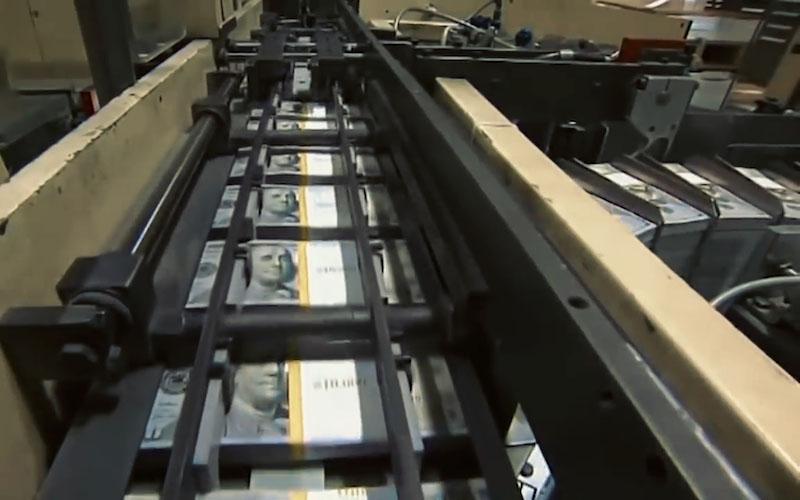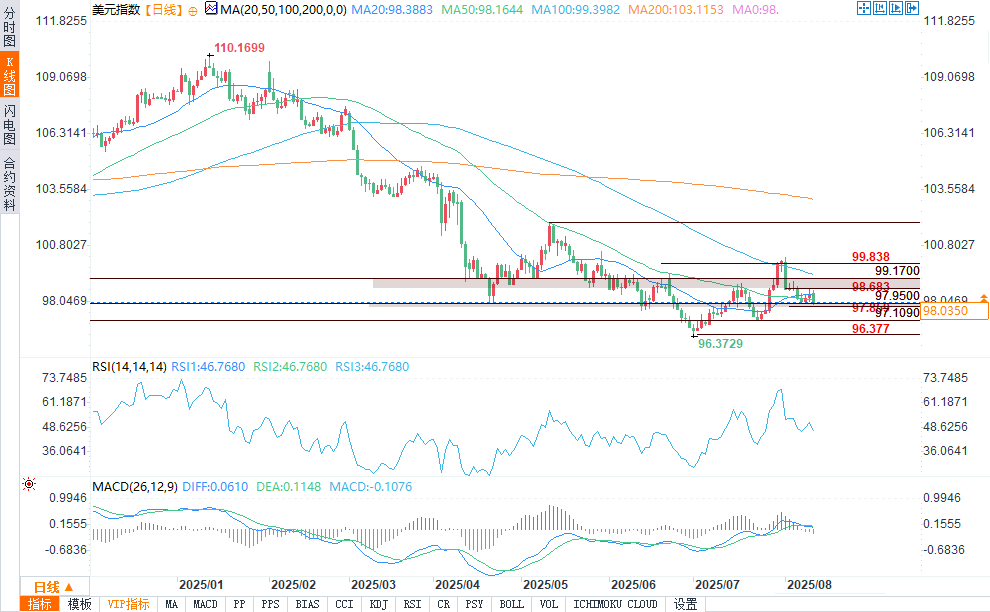USD Outlook: Bearish pressure intensifies after the US dollar index breaks below its 50-day moving average
2025-08-13 01:22:45

Last week's weak non-farm payroll data and this week's tame inflation data have led the market to believe the Federal Reserve will cut interest rates in September. "Underlying inflation remains muted, which provides policymakers with room to maneuver," noted Carl Shamota of Corpay. Federal Reserve Chairman Jerome Powell is expected to address the policy outlook at the Jackson Hole symposium on August 21.
Euro and yen pare gains against dollar as yield spreads narrow
The euro reversed its early losses, rising 0.06% to $1.16235, while the dollar narrowed its gains against the yen, rising only 0.17% to 148.390 yen. Shamota believes that the narrowing of short-term yield spreads is a key driver of selling pressure on the dollar, and this pressure is likely to persist if subsequent data confirms a slowdown in US economic activity.
The British pound rose 0.4% to $1.34805. Earlier data on the UK labor market showed continued weakness in the job market, but resilient wage growth, a development that may make the Bank of England cautious about cutting interest rates. The Australian dollar fell 0.3% to $0.64945 after the Reserve Bank of Australia cut interest rates by 25 basis points as expected. ANZ Bank predicts another rate cut in November.
Treasury bond markets send mixed signals about interest rate expectations
Following the release of the US CPI data, Treasury yields diverged. The 2-year Treasury yield fell 2 basis points to 3.906%, reflecting market bets on a near-term rate cut. The 10-year Treasury yield rose 2 basis points to 4.297%, while the 30-year Treasury yield rose nearly 5 basis points to 4.887%. Analysts said the data met expectations and did not raise inflation concerns, supporting the Federal Reserve's policy easing without compromising inflation control.
Tariffs and global trade remain risk variables
News that the United States will extend high tariffs on Chinese imports for another 90 days caused little ripple in foreign exchange markets. The mutually agreed extension, while delaying escalation, leaves the core disagreement unresolved.
Former St. Louis Federal Reserve Bank President James Bullard joined the market discussion, expressing his willingness to serve as Fed chairman if nominated and emphasizing the importance of dollar stability and institutional independence.
Market Outlook: If the Fed releases aggressive easing signals, the US dollar index is vulnerable

(Source of US Dollar Index daily chart: Yihuitong)
With inflation under control and signs of labor market slack, the Federal Reserve has room to cut interest rates in September. The narrowing yield spreads and the resilience of major foreign currencies suggest that if Powell signals a readiness for further significant rate cuts at the Jackson Hole symposium, the US dollar index could face sustained selling pressure, pushing it towards key support levels.
From a technical perspective, the US dollar index is in a weak position after breaking below the 50-day moving average of 98.200, which has become a new resistance level. Today's sell-off has made it possible for the market to break through the Fibonacci support level of 97.859, which may become a trigger point for an acceleration of the downside. The next major target is the low of 97.109 set on July 24.
- Risk Warning and Disclaimer
- The market involves risk, and trading may not be suitable for all investors. This article is for reference only and does not constitute personal investment advice, nor does it take into account certain users’ specific investment objectives, financial situation, or other needs. Any investment decisions made based on this information are at your own risk.





















